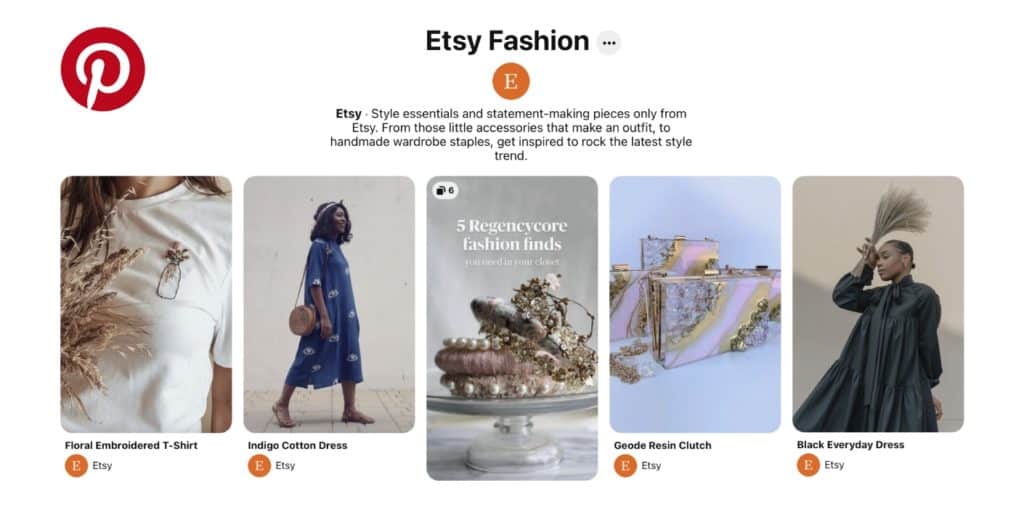While the internet has changed marketing for businesses of every shape and size, perhaps one of the most transformed over the past couple of decades has been the niche business—and more specifically, niche digital marketing.
Pre-internet, niche businesses had to have products or services that would appeal to enough people to support the cost of advertising—which meant that many potential niche products never saw the light of day.
Today, the situation is different. Niche products still have to make enough money to support their advertising costs, like any other business, but those costs have gotten so much lower, and ad reach so much wider, that the niche product and service market and digital marketing niches have boomed.
But digital marketing niches aren’t anything new; just think about some of the niche products or services you’ve come across in the past few years. Print-on-demand T-shirts. Super-exclusive (and expensive) matchmaking services. Every subscription box service out there, from Blue Apron (meals and recipes) to Birchbox (beauty products). They all have digital niches and profitable digital marketing niches.
What is a digital marketing niche?
A digital marketing niche is a specialized area within the field of digital marketing that focuses on a specific target market or type of marketing activity. Some examples of digital marketing niches might include social media marketing, email marketing, content marketing, search engine optimization (SEO), or pay-per-click (PPC) advertising. Within each of these niches, there are often many sub-niches that specialize in even more specific areas, such as Instagram marketing or Google Ads. Digital marketing niches allow businesses to focus their efforts on specific areas of marketing and target specific groups of consumers, rather than trying to be everything to everyone.
How to find your niche
Here are some steps you can follow to find your niche:
- Identify your interests and passions: What are you interested in or passionate about? This can be a good starting point for finding a niche that you will enjoy working in.
- Research potential markets: Look for areas where there is demand for products or services related to your interests and passions. This can help you identify potential niches that have the potential to be profitable.
- Consider your skills and expertise: What skills and expertise do you bring to the table? This can help you find a niche where you can leverage your strengths and add value for your target audience.
- Analyze the competition: Look at the competition in your potential niches to see if there is room for a new player. While it is important to have competition, you want to make sure there is enough demand to support your business.
- Test your idea: Once you have identified a potential niche, try to validate your idea by talking to potential customers and getting feedback on your product or service. This can help you refine your idea and ensure that there is a market for what you are offering.
What are the best niches for digital marketing, and why do they even matter?
The reality now is that if you want to create a line of handmade journals targeting 28-35-year-old mothers of gifted kids in Laguna Beach, California, you can do it—and with the right digital marketing strategy, you can probably even become profitable.
If this sounds like you, or even if your niche is a little bit larger than our mom-journal example, here are 5 digital marketing strategies you need to be using.
Why does having a niche matter?
Niche matters because it allows you to focus your marketing efforts on a specific group of people and thus improve your chances of converting them into customers. Niche marketing is also more cost-effective, as you can target your marketing efforts to the people most likely to be interested in your products or services rather than wasting money on reaching a large, generic audience. Focusing on a niche market can also differentiate your business from your competitors.
10 Niche Digital Marketing Strategies
1. Let your customers speak for you through user-generated content.
One of the advantages that niche businesses and niche digital marketing have over mainstream ones is that their customers really love their products.
Think about it: if a product is harder to find and more expensive than other similar products, there’s no other reason for someone to buy it. Ben & Jerry’s ice cream costs double what other mainstream ice cream brands cost, but if you’re in the mood for Phish Food, nothing else is going to cut it. They’ve established more than just a niche; they’ve created a digital niche.
One of the best ways you can leverage this loyalty online is by embracing user-generated content (UGC). At its most basic, UGC is any content, from tweets to blog posts to wikis, etc., that’s created by a brand’s followers. So if someone posts an Instagram picture of themselves dunking an Oreo with the hashtag #oreo, that’s UGC for the social media-savvy cookie brand. That way, their hashtag is not just targeting fellow cookie lovers; they’re targeting lovers of the brand—and your digital marketing niche.
To incorporate UGC into your digital marketing niche, you can start by simply interacting with your fans on social media. Thank customers who post about your product with a personalized message, if you can, and by sharing their posts with your followers. Establish your digital niche.
Optimize your use of hashtags—if your customers are already using a specific one in their posts about your brand, it could be best to start using that one too. Otherwise, start a custom hashtag and use it religiously in your posts. That unique hashtag will make all the difference when it comes to not just tracking your followers but targeting them and creating a profitable digital marketing niche.
Once you’ve mastered this, take your UGC game further with a UGC marketing campaign.
2. Take advantage of retargeting.
Retargeting, or remarketing, is a highly effective digital marketing strategy that essentially lets you follow your customers around the internet. When a potential customer visits your site but then leaves without converting, you can ensure that they see ads for your business at strategic moments during their browsing.
This is a great way for niche businesses to spend limited advertising dollars because it focuses those dollars on people who have already shown interest in the product. Retargeting means you’re not starting from scratch with each customer, which will almost certainly result in a greater ROI.
3. Choose your platforms wisely.
Niche products and services necessarily have smaller audiences than mainstream products—that’s why they’re called a niche, after all.
When it comes to social media, that means that you want to take a little time deciding which platforms are the most relevant for your business.
Facebook, for example, is so heavily populated that your business’s voice may be drowned out by every other remotely similar business that has a Facebook presence. If this is the case, why waste your time cultivating a Facebook page that won’t bring you strong returns?
Etsy, for example, though not exactly a niche business, has a stellar Pinterest profile. That’s fitting, considering that the peer-to-peer marketplace is a highly visual website filled with images of what people are selling.
Pinterest fits Etsy so well because the company can use the platform not just to show off items that are for sale on the website but also to connect with pinners who share Etsy’s overall aesthetic: vintage, unique, handmade, and authentic.
Remember that it’s better to have a strong, engaging presence on a single platform than a lukewarm one on five platforms. Pick the one or ones that will help you connect with your specific audience, whether that’s YouTube, Pinterest, Instagram, TikTok—you get the picture—is entirely up to you. Cultivate a digital niche and social media presence that will keep your customers coming back for more.

4. Connect with influencers.
Influencers, or popular bloggers, social media celebrities, and other people who have huge online followings, can be just as helpful for niche businesses as they can for mainstream ones. According to recent statistics from Mediakix, 80 percent of marketers have found B2B influencer marketing to be effective, with over 70% agreeing that the quality of customers and traffic from influencer marketing is better than other forms of marketing.
But about one in four internet users leveraged some sort of ad blocker in 2021, which means you have to reach them another way. Traditional, self-promotional advertising just isn’t as effective today as it used to be. You need a digital marketing niche to be most effective.
That’s part of why influencers may even be more helpful for niche businesses, which rely heavily on customer loyalty, than for mainstream businesses. Since marketing a niche business relies on personal recommendations and word-of-mouth, having an influencer speak on your behalf can carry a great deal of weight with your audience.
It may be more difficult to find influencers for your niche business, but the time and effort you put into finding the right one can be well worth it.
Let’s say you’re a craftsman who does carpentry for luxury homebuilders and homeowners. At first glance, you might not know where to look for influencers—construction professionals? Fellow carpenters?
While there very well may be construction and carpentry influencers that you want to reach out to, one industry that has plenty of influencers is architecture. Building relationships with architecture and design influencers can benefit you because these influencers share an audience with you: people who are passionate about beautiful, quality craftsmanship.
5. Become the go-to expert for your industry.
When you’re in a niche market, customers are going to expect you to know what’s going on in your industry—what’s new and exciting, what’s coming down the pipeline, what’s trendy, what’s not.
If you want your customers to trust you and stay fiercely loyal to your brand, then you need to become a go-to expert in your industry—and more than that, you need to show that you’re a go-to expert by sharing quality content that’s relevant to your customers.
Take EyeCare 20/20, an ophthalmology practice in New Jersey that specializes in LASIK and other surgical procedures as well as eye ailments like dry eye. They’ve built up an intensely loyal patient base by not just taking excellent care of those patients but also through thought leadership, as well. EyeCare’s lead ophthalmologist, Dr. Cary Silverman, writes articles for ophthalmology publications as well as publishes frequent blog posts on issues that his patients face.
By contributing this kind of informative, quality content to the ophthalmology space, Dr. Silverman and his team at EyeCare 20/20 have earned the trust of both current and potential patients. And that’s not even mentioning the fact that this kind of content has a hugely positive effect on their Google search rankings.
6. Take advantage of sustainable mediums with video marketing.
Video can be a very effective marketing tool for businesses of all sizes, including niche businesses. It has the ability to engage viewers in a way that text and images cannot, and it can be shared easily on social media and other platforms. In addition, video can help businesses build trust with their audience by showing them the people behind the brand and the products or services being offered.
One key to using video effectively as a marketing tool is to focus on creating high-quality, informative, and entertaining content that resonates with your target audience. This can help to build a loyal following and drive sales over the long term.
Another important aspect of sustainable marketing is to focus on building relationships with customers and providing them with value. This can involve regularly updating your website and social media pages with fresh content, responding to customer inquiries and comments, and offering promotions and special deals. By treating your customers well and providing them with a positive experience, you can help to build a strong foundation for your business and increase the chances of customer loyalty.
7. Invest in PPC advertising.
Paid search, also known as pay-per-click (PPC) advertising, can be a highly effective way to reach a targeted audience and drive qualified traffic to your website. PPC advertising allows you to bid on specific keywords and phrases that are relevant to your business, so that your ads will be displayed to users who are searching for those terms. This can be especially useful for niche markets, where the target audience may be smaller but highly interested in the specific products or services that you offer.
One of the key benefits of PPC advertising is that you only pay when someone clicks on your ad, hence the name “pay-per-click.” This means that you can control your advertising costs and only pay for actual results. Additionally, PPC campaigns can be highly targeted, allowing you to reach users who are actively searching for the types of products or services that you offer.
To get the most out of your PPC campaigns, it’s important to conduct thorough keyword research to identify the most relevant and profitable keywords for your business. You should also optimize your ads and landing pages for mobile devices, as more and more users are accessing the internet from their smartphones and tablets. Finally, be sure to make use of ad extensions, which allow you to provide additional information about your business and products in your ads, increasing the chances of a user clicking through to your website.
8. Don’t forget offline marketing.
Even though we take pleasure from the benefits of the web, nothing beats traditional offline marketing.
Offline marketing, also known as traditional marketing or outbound marketing, refers to marketing activities that take place outside of the digital realm. This can include a wide variety of tactics, such as print advertising, direct mail, billboards, and events.
One of the advantages of offline marketing is that it allows businesses to connect with their target audience in a more personal and tangible way. For example, attending events or giving out business cards or coupons can create a physical connection between the brand and the customer. This can be especially useful for niche businesses that are trying to reach a specific target segment or for products that customers may want to touch or experience before making a purchase.
Offline marketing can also be a cost-effective way to reach a local audience. For example, participating in local events or donating to a charity can help to build a positive reputation and increase brand awareness in the community. Additionally, tactics like print advertising or direct mail can be targeted to specific demographics or geographic areas, allowing businesses to reach their target audience more effectively.
Overall, incorporating both online and offline marketing tactics can be an effective way to reach and engage with potential customers. By using a mix of digital and traditional marketing strategies, businesses can create a well-rounded marketing plan that can help to build brand awareness and drive sales.
9. Consider affiliate marketing
Affiliate marketing is performance-based marketing in which a business rewards one or more affiliates for each visitor or customer brought about by the affiliate’s own marketing efforts. In niche digital marketing, affiliate marketing can target specific audiences by promoting products or services that are relevant to that niche. For example, a blogger who writes about gardening and outdoor living could use affiliate marketing to promote gardening tools and equipment, or a website that focuses on health and wellness could use affiliate marketing to promote supplements and fitness equipment. The key to using affiliate marketing in niche digital marketing is to find products or services that align with the interests and needs of the niche audience.
10. Utilize SEO and content marketing
SEO is the practice of improving the quality and quantity of website traffic by increasing the visibility of a website or a web page in a search engine’s unpaid results. It involves optimizing website elements such as meta tags, keywords, and content to make it more likely that a website will rank higher in search engine results.
Content marketing and SEO go hand in hand. Consistent and relevant content attracts and engages a specific target audience to drive profitable customer action. In niche digital marketing, B2B SEO and content marketing can be used together to target specific niche audiences by creating relevant content and optimizing the website and the content for search engines. Optimizing the website and the content for relevant keywords will increase the website’s visibility in search engine results and make it more likely that the niche audience will find it. Additionally, creating valuable, educational, and informative content will attract and retain the niche audience and establish the website as a trusted and authoritative source of information for that niche.
Final Thoughts
Niche businesses have different marketing tactics and challenges from mainstream businesses, but they can still use the immense power of niche digital marketing to their advantage.
Whether you’re looking to carve out a digital niche, get into niche digital marketing, or simply craft a profitable digital marketing niche, you’ll likely need some marketing and PR help. Reach out.







